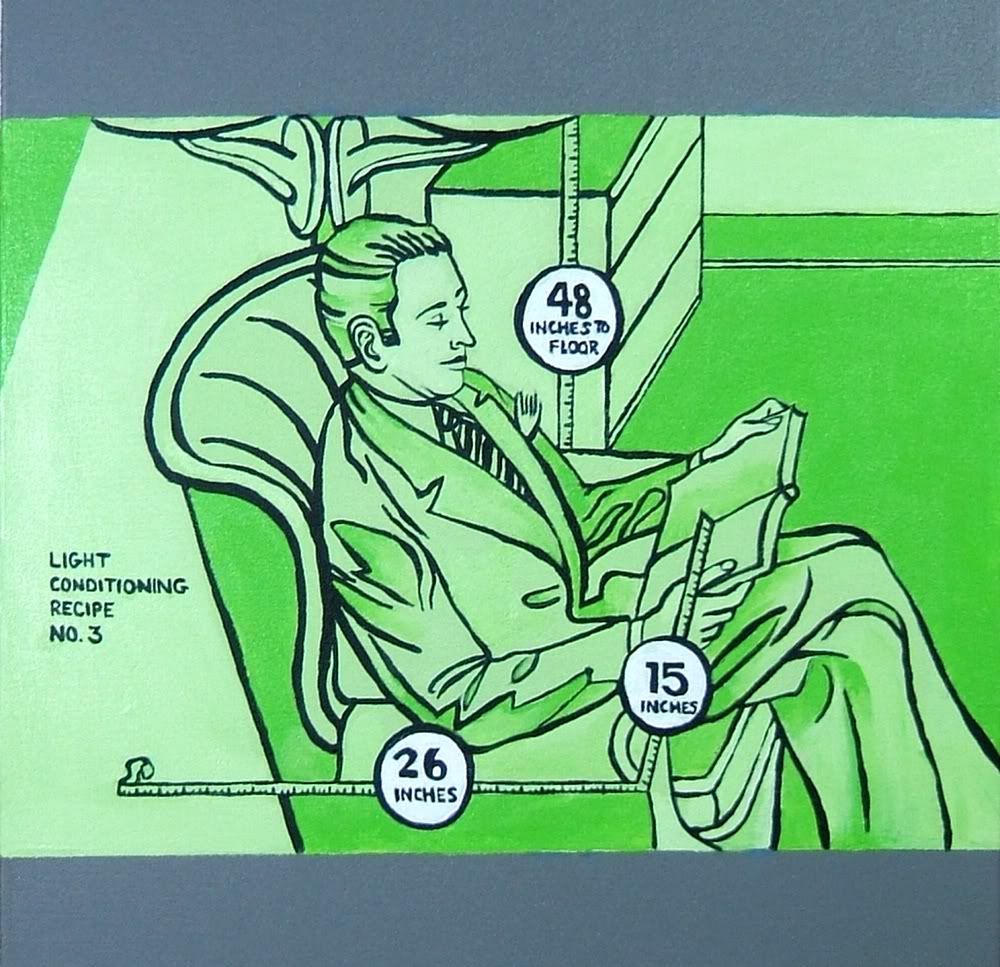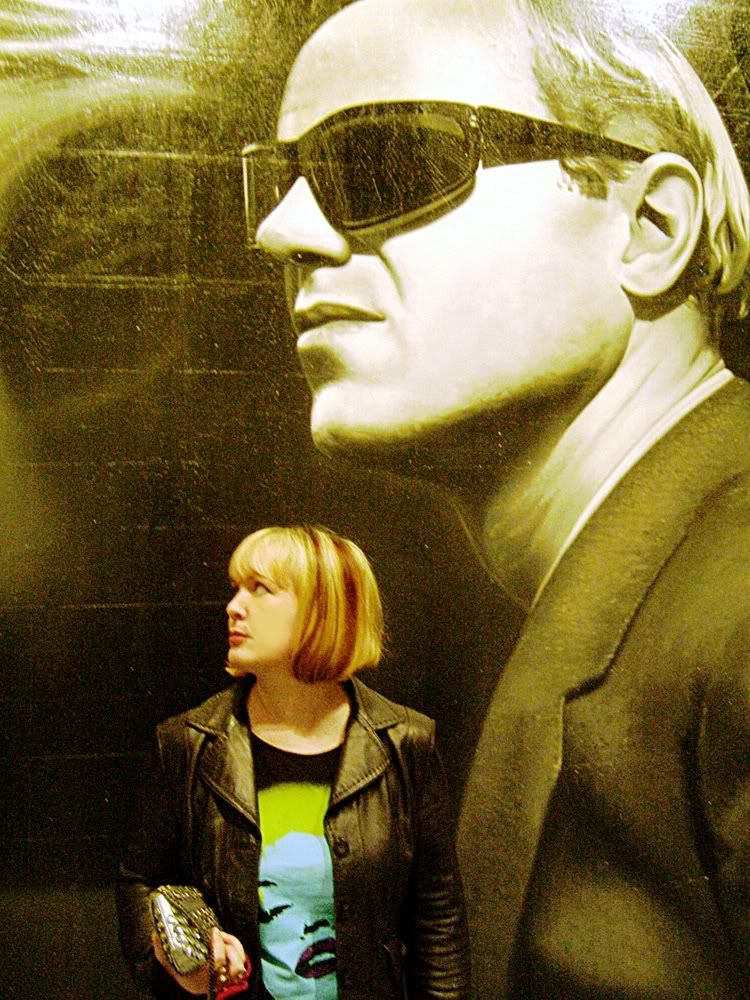Light Conditioning Recipe No. 3 and Double Standard
I'm including yet another Light Conditioning Recipe today--this one is No. 3. from my ongoing series about optimum lighting effects according to a General Electric flyer from the 1950's.
Also attached you'll find my August 2010 contribution to the Northside San Francisco. This is my review of the Dennis Hopper retrospective "Double Standard" I went to the opening at the MOCA on July 10 and was again reminded of what an important visual artist Hopper was. The photo is me in front of one of his "billboard paintings," this one of fellow pop artist James Ronsenquist.
Take care,
Sharon Anderson


Dennis Hopper Double Standard comes to The Museum of Contemporary Art in Los Angeles
By Sharon Anderson
“There was a real fluidity between Dennis’s explorations as an artist and his achievements as a filmmaker.” - Julian Schnabel
“Like all artists I want to cheat death a little and contribute something to the next generation.”-Dennis Hopper
Dennis Hopper’s first American retrospective opened at the Museum of Contemporary Art in Los Angeles on July 11th and runs through September 26, 2010. Though sometimes overlooked as a visual artist, this iconoclastic film director and actor who starred in “Easy Rider” and “Blue Velvet” was for the most part a full time artist throughout the sixties. He became an important figure in the Los Angeles pop art scene, a subject of renewed interest through recent films like “The Cool School” which documents the legendary Ferus Gallery. Hopper not only created art but was an avid collector and patron, purchasing works by key artists of his era. Painter Ed Ruscha recalled that Hopper was one of the first people in the field of entertainment to become a major art collector.
Hopper the artist was known primarily for his photography that documented the political and cultural shifts that occurred during the sixties; rural America, Martin Luther King, Jr., protests and Andy Warhol were all among the subjects he managed to capture with a keen eye for what the images would come to mean in the future. Much of Hopper’s work involves a sense of visionary timing. Collecting and making art, he found himself at the right place at the right time, recording critical moments that became history.
Hopper’s experimentation and eclecticism drove him to work in a variety of mediums. Paintings, assemblages, found objects and sculptures are included in this exhibit which spans over forty years of creative exploration. Giant fiberglass sculptures “La Salsa Man” and “Mobil Man” complement the expansive canvases rendering pop artists in billboard-sized paintings reminiscent of the expansive horizons of Hopper’s native Kansas. An ambitious work dating from 1967-68 through 2000, “Bomb Drop” is a Plexiglas and stainless steel sculpture with glowing neon lights that turns an instrument of destruction, a version of a bomb-drop control module, into a larger than life statement against the war in Vietnam. Hopper’s most recognized work is the photo “Double Standard”, a view looking out from behind the wheel of an automobile at the Standard Gas station on the corner of Santa Monica and Melrose Avenues in Los Angeles, also the trajectory of the renowned Route 66.
The retrospective was curated by Julian Schnabel, artist and long time friend of Hopper. Schnabel describes Hopper’s monumental, energetic work as “Whitman-esque” and, like Whitman, Hopper’s avant-garde, controversial edge emerges as quintessentially American. Dennis Hopper’s continuous search for meaning, identity and reinvention both in his film and art career resonates with the turbulence of late twentieth century America. This comprehensive exhibition captures the unpredictable excitement and complexity of both the era and the man.